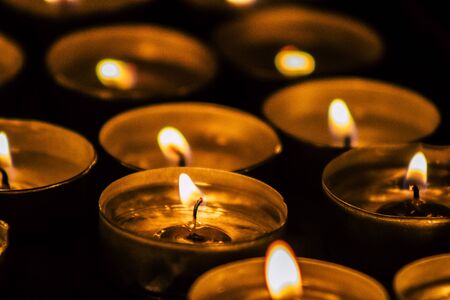1. Introduction to Druidic Divination
Within the rolling mists and ancient woodlands of Britain, the practice of divination has long held a place of reverence among the Druidic traditions. Far more than mere fortune-telling, Druidic divination weaves together the threads of nature, spirit, and ancestral wisdom, forming a tapestry that reveals insights into both the seen and unseen worlds. At its core, divination in this context is an act of seeking knowledge through the symbols and cycles that govern the land—be it through the observation of natural phenomena, the casting of ogham sticks, or the reading of omens in birdsong and weather. These practices, deeply embedded in British heritage, have shaped not only personal spiritual journeys but also communal decision-making and cultural identity. The enduring significance of Druidic divination lies in its ability to bridge ancient customs with contemporary spiritual exploration, offering guidance rooted in respect for tradition and the living landscape. As we explore the origins and evolution of these practices, we uncover how divination continues to illuminate pathways for seekers in both ancient groves and modern gatherings alike.
2. Historical Origins of Divinatory Practices
The origins of divination in British Druidic traditions are deeply rooted in the mists of ancient Britain, reaching back to both Celtic and pre-Celtic influences. The land that would become Britain was a tapestry of tribal communities, each with its own spiritual practices, yet unified by a reverence for the cycles of nature and the unseen forces that shaped their world. Before the arrival of the Celts, indigenous peoples engaged in rituals and ceremonies designed to seek guidance from ancestral spirits and the natural world. With the advent of Celtic culture around 500 BCE, these traditions evolved into more structured forms, with Druids emerging as learned intermediaries between the earthly and spiritual realms.
Archaeological evidence supports the existence of divinatory practices long before written records. Megalithic sites such as Stonehenge and Avebury suggest ritualistic observances aligned with celestial events, indicating an early understanding of omens and augury. Artefacts like ogham-inscribed stones and ritual objects unearthed from burial sites further attest to a sophisticated spiritual life where divination played a central role.
Literary sources, though often coloured by Roman or later Christian perspectives, provide additional insight. Classical writers such as Julius Caesar described the Druids as priests versed in prophecy, using natural signs—like the flight patterns of birds or the rustling of sacred oak leaves—to interpret the will of the gods. Early Irish and Welsh texts, preserved through oral tradition before being committed to manuscript, echo these accounts. They recount tales of seers and bards who used poetry, dreams, and symbols to unveil hidden truths.
Key Influences on British Druidic Divination
| Influence | Description | Evidence |
|---|---|---|
| Pre-Celtic Animism | Belief in spirits inhabiting natural elements such as stones, trees, and rivers; rituals for communion with these forces. | Megalithic monuments, votive offerings found in springs and groves. |
| Celtic Tradition | Structured priesthood (Druids), codified rituals including augury, interpretation of omens, sacred groves as sites for prophecy. | Classical accounts (e.g., Caesar), ogham stones, Iron Age artefacts. |
| Literate Testimony | Oral literature recounting prophecies and symbolic acts; later manuscripts preserving myths about seers and Druidic wisdom. | The Mabinogion, Lebor Gabála Érenn, bardic poetry. |
Interpreting Archaeological and Literary Evidence
The convergence of archaeological findings and ancient literary testimony paints a rich portrait of divination’s historical roots in Britain. While physical relics reveal ritual spaces and symbolic artefacts used in ceremony, written accounts—though requiring careful interpretation due to later biases—offer vivid descriptions of divinatory acts. Together, they illustrate how British Druidic traditions wove together indigenous beliefs with Celtic innovation to create a distinctive spiritual heritage grounded in both earth and myth.

3. Traditional Methods of Druidic Divination
The ancient Druids of Britain, steeped in reverence for the land and its mysteries, employed a variety of divinatory methods to seek guidance from the unseen realms. Their practices were deeply intertwined with the rhythms of nature and the wisdom passed down through oral tradition. Among the most renowned tools was the ogham, a sacred script composed of lines and notches carved into wood or stone. The ogham served both as an alphabet and as a mystical system, each character associated with particular trees and their spiritual qualities. In divination, Druids would cast ogham sticks or draw lots, interpreting the patterns and symbols as messages from the Otherworld.
Another time-honoured technique was augury—the art of reading omens from the flight and behaviour of birds. To the Druidic mind, birds were not merely creatures of air but messengers between worlds. Observing a ravens call at dawn or the circling of a hawk might reveal portents concerning matters of health, harvest, or even royal succession. Such practices reflected a profound trust in nature’s signs and cycles.
Dream interpretation also featured prominently in Druidic divination. Dreams were believed to open a window onto deeper truths, allowing communication with ancestral spirits or deities. Elders skilled in dream lore would listen attentively to accounts of nocturnal visions, discerning hidden meanings through symbolic analysis rooted in Celtic mythos.
Yet perhaps most quintessentially Druidic was the act of communion with the natural world itself. Rather than separating themselves from nature, Druids immersed their senses in the whispering woods, flowing rivers, and shifting skies—reading subtle changes as auguries. Whether contemplating patterns in fallen leaves or sensing energies beneath ancient oaks, these wise ones sought harmony with the earth’s spirit as both guide and oracle.
In all these methods, the traditional British Druid approached divination not as mere fortune-telling but as a sacred dialogue—an ongoing relationship with nature’s intelligence and ancestral wisdom. Through ritual practice and intuitive insight, they nurtured a legacy that echoes gently through Britain’s green hills and sacred groves to this day.
4. Evolution Through Christianisation and Modern Adaptations
The arrival of Christianity in Britain during the late Roman and early medieval periods marked a profound turning point for Druidic traditions, particularly those concerning divination. As the new faith spread across the British Isles, it brought with it a worldview that was often at odds with indigenous spiritual practices. Divinatory rites, which once held a respected place within Druidic society, were increasingly viewed as heretical or even dangerous by Christian authorities.
This cultural shift prompted both overt suppression and subtle adaptation. Many Druidic rituals were condemned or outlawed, forcing practitioners either to abandon their crafts or to continue them in secret. The following table illustrates the transformation of Druidic divination practices under Christian influence:
| Druidic Practice | Christian Response | Adaptation/Outcome |
|---|---|---|
| Ogham divination (tree alphabet) | Condemned as pagan symbolism | Transformed into folk customs or hidden in poetry |
| Augury (bird and nature omens) | Labeled superstition | Merged with rural folklore or disguised as natural wisdom |
| Sacred groves and stones | Sites repurposed for churches or forbidden gatherings | Some sites Christianised; others abandoned or remembered in legend |
Despite attempts at eradication, elements of Druidic divination survived—often embedded within local customs, seasonal celebrations, and oral traditions. Over centuries, these vestiges mingled with Christian festivals and everyday life, subtly preserving ancient insights.
The revival of interest in Druidry during the eighteenth and nineteenth centuries saw a reclamation and reinterpretation of divinatory practices. Influenced by Romanticism and antiquarian scholarship, modern Druids sought to reconstruct lost rituals while aligning them with contemporary values. Today, British Druidic divination embraces both its historical roots and modern innovations, fostering a practice that is at once respectful of tradition and open to personal interpretation.
5. Current Practices and Cultural Revival
In recent years, the ancient art of Druidic divination has experienced a notable resurgence across the United Kingdom, finding new life within modern communities that seek to reconnect with Britain’s spiritual heritage. This revival is not merely a nostalgic nod to the past but represents a living tradition, thoughtfully adapted to contemporary contexts while honouring its historical roots.
Community Gatherings and Modern Druids
Across the UK, numerous Druidic groups and circles have emerged, each fostering a spirit of communal learning and shared ritual. These communities often meet at sacred sites—such as Stonehenge, Avebury, or the ancient yew groves of Wales—to conduct seasonal rites, share knowledge, and practise divination. The methods employed may range from ogham stick readings and scrying in natural waters to meditative journeys guided by ancestral wisdom.
Organisations Preserving Tradition
Several organisations have played pivotal roles in nurturing this revival. The Order of Bards, Ovates & Druids (OBOD), for example, offers structured training in Druidic arts and promotes ethical divinatory practice grounded in respect for both tradition and personal insight. Similarly, The British Druid Order and other regional collectives host workshops, online forums, and publications that encourage exploration of ancient techniques within a modern ethical framework.
Festivals: Celebrating the Old Ways
Druidic festivals—such as Beltane at Glastonbury Tor or the Autumn Equinox at Primrose Hill—serve as vibrant focal points for the expression of these revived traditions. Here, practitioners gather to honour the turning of the seasons, participate in group divination ceremonies, and exchange interpretations rooted in both folklore and personal revelation. Such gatherings are inclusive and welcoming, reflecting a wider societal desire to rediscover meaning through connection with land, myth, and community.
The contemporary resurgence of Druidic divination thus weaves together threads from Britain’s mystical past with the values and aspirations of today’s seekers. By embracing these practices anew, communities across the UK ensure that the wisdom of the Druids continues to inspire and guide future generations.
6. Social and Spiritual Significance in Modern Britain
In contemporary Britain, the echoes of Druidic divination resonate not only as a historical curiosity but as a living spiritual tradition that gently threads its way through modern society. For many Britons who engage with Druidic practices today, divination is far more than an antiquarian pursuit; it serves as a deeply personal means of connecting with ancestral wisdom, the rhythms of the natural world, and one’s own inner landscape. Whether through casting ogham staves beneath ancient yew trees or seeking guidance from the cycles of the moon, such practices provide individuals with a sense of rootedness in a fast-changing world.
On a personal level, modern practitioners often turn to Druidic divination for insight during times of uncertainty, reflection, or transition. The act of divining—be it through traditional symbols, nature observation, or ritual meditation—offers solace and clarity, fostering a dialogue between the self and the wider cosmos. This connection affirms a sense of belonging to a lineage that stretches back through centuries of British history and myth.
Beyond individual practice, Druidic divination holds social significance within communities that cherish Britain’s Celtic heritage. Seasonal gatherings at sacred sites—such as Stonehenge or Avebury—often include rituals where divinatory acts are performed collectively. These shared experiences foster communal bonds and help reaffirm values rooted in respect for nature, hospitality, and mutual understanding. In this way, divination becomes not merely a private art but also a vessel for communal identity and continuity.
Within the broader tapestry of British cultural identity, Druidic divination stands as both a symbol of indigenous spiritual resilience and an invitation to explore alternative ways of knowing. While mainstream society may view these practices with curiosity or scepticism, there is an increasing recognition of their role in promoting mindfulness, environmental stewardship, and psychological well-being. Festivals, workshops, and public talks on Druidry have found audiences among those seeking meaning outside conventional religious frameworks.
Thus, the legacy of Druidic divination continues to evolve alongside Britain itself: shaping and being shaped by contemporary values while remaining anchored in ancient traditions. Its enduring appeal lies not just in its mystical allure but in its capacity to foster reflection, connection, and community—a quiet yet profound influence on the spiritual lives of many modern Britons.

